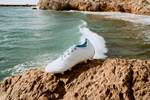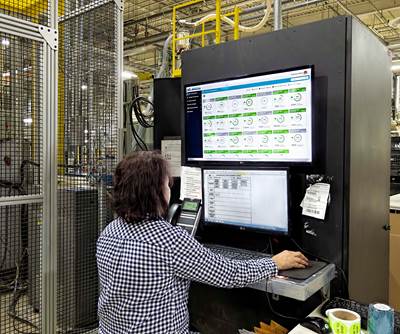Top 50 Update
Who Was First In Hot Runners, Ultrasonic Welding & PET?
It is no easy task to unearth the early history of some of the most important inventions in plastics equipment, materials, and additives technology.
It is no easy task to unearth the early history of some of the most important inventions in plastics equipment, materials, and additives technology. Many of the pioneers are retired or deceased; written records are few in many cases; and there is no accepted authority to referee conflicting memories or disputed claims.
Plastics Technology’s editors encountered these obstacles in preparing October’s 50th Anniversary special feature on “50 Ideas That Changed Plastics.” Since then, further information has come to our attention that justifies further clarification of three of those ground-breaking inventions.
Hot Runners
As we reported in October, the early history of the invention, patenting, and commercializing of hot runners in North America dates back to the early 1950s and involves a number of players, including Protective Closures Co., Improved Machinery Co., Watlow, Caco-Pacific, Incoe, and Mold-Masters. Of this group, two companies—Incoe and Mold-Masters—laid claim to putting the first commercial hot-runner system on the market.
Injection Control and Engineering—now known as Incoe Corp., Troy, Mich.—was founded in 1958 and that same year was offering for sale internally heated nozzle and sprue-bushing kits. Incoe filed for a U.S. patent in February 1959 for an “Internally Heated Nozzle and Molding Method.” U.S. Patent 3,010,155 was granted in November 1961 for the invention of an internally heated nozzle or sprue bushing, developed by Gerald D. Gilmore, one of the founders of Incoe. The patent drawing shows a heated hot-runner nozzle fed by a heated manifold, but Incoe sources say the patent office denied the heated manifold as novel at that time since it was first invented by the die-casting industry.
Mold-Masters Ltd. in Georgetown, Ont., was founded by master toolmaker Jobst U. Gellert in 1963. Gellert, who came to Canada from Germany in 1958, had worked at Husky until he left to start his own firm and pursue his idea of building an externally heated nozzle and runner system. In 1965 Gellert filed a patent on a method of manufacturing hot-runner components with cast-in heater elements positioned outside the melt channel. The patent, granted in 1968, established Mold Masters as the first company to offer a commercial hot-runner system using cast-in heaters external to the melt channel.
At that time, commercial hot-runner systems included both internally heated types (with the heater element in the melt stream so the melt flowed around it) and externally heated systems with replaceable strap, cartridge, or sleeve-type heaters. Unlike other suppliers at the time, Mold-Masters focused exclusively on “open-pipeline” externally heated systems. External heating eventually became the most popular choice in the market.
Ultrasonic Welding
Since our October issue went to press, we learned more details about the invention of ultrasonic welding at Branson Instruments (later Branson Ultrasonics), Danbury, Conn. Two important contributors to this development were Robert Soloff and Seymour Linsley, colleagues at Branson who were granted a patent on the invention (assigned to Branson) on Dec. 21, 1965.
At the time, Soloff was an application lab manager and was working on ultrasonic film sealing, whereby thin plastic films were passed under an ultrasonic probe to weld bags and tubes. Soloff recalls that he was working with a probe in hand when he inadvertently brought it into contact with a Scotch Tape dispenser on his desk and the two halves of the dispenser welded together. He then realized that sound waves could travel around corners and down the sides of rigid plastics to reach the joint area to be welded. Instead of moving the probe manually around the perimeter of the joint area between two plastic parts, the two parts to be joined could be clamped together in a stationary press, and ultrasonic energy could be applied to weld the entire joint area at once. Soloff notes that he went on to develop the first ultrasonic press and was granted a patent for the ultrasonic staking method.
Soloff left Branson in 1969 and founded Sonics & Materials Inc., Newtown, Conn., to supply ultrasonic equipment. He is still the company’s president.
PET Polyester
In October, we stated PET was invented in 1941 by ICI in the U.K. In fact, PET was patented in ’41 by J.R. Whinfield and J.T. Dickson, British chemists for the Calico Printers Association of Manchester. That same year, they also invented PET fiber, first manufactured and patented by ICI
Read Next
Making the Circular Economy a Reality
Driven by brand owner demands and new worldwide legislation, the entire supply chain is working toward the shift to circularity, with some evidence the circular economy has already begun.
Read MorePeople 4.0 – How to Get Buy-In from Your Staff for Industry 4.0 Systems
Implementing a production monitoring system as the foundation of a ‘smart factory’ is about integrating people with new technology as much as it is about integrating machines and computers. Here are tips from a company that has gone through the process.
Read MoreLead the Conversation, Change the Conversation
Coverage of single-use plastics can be both misleading and demoralizing. Here are 10 tips for changing the perception of the plastics industry at your company and in your community.
Read More










